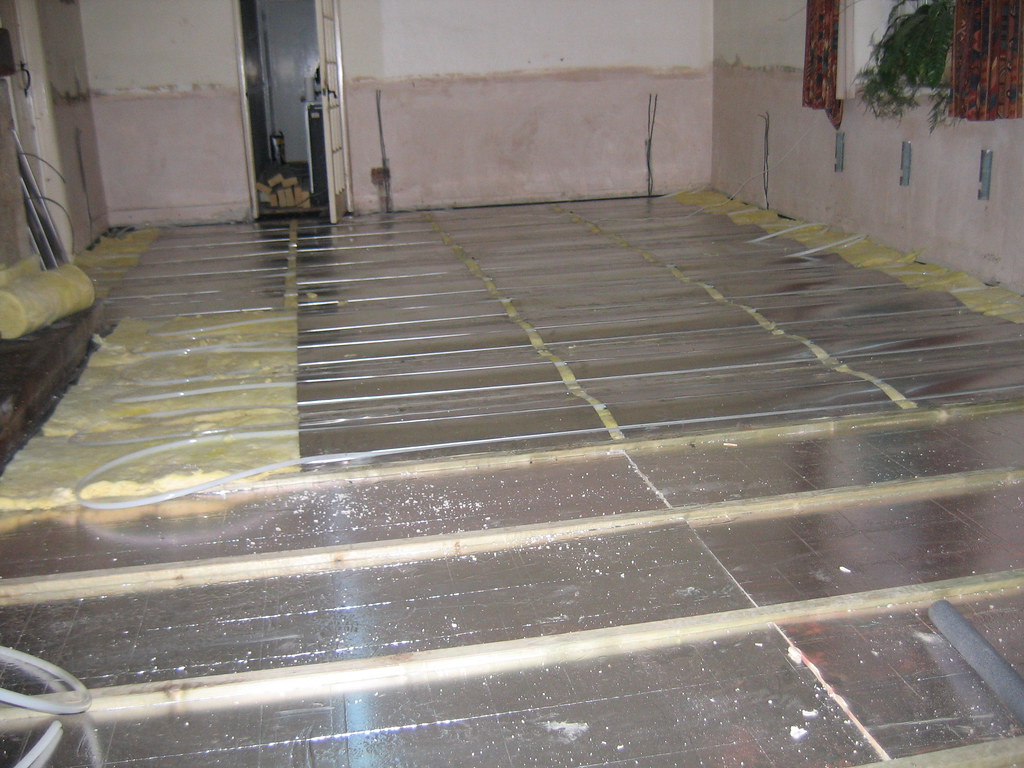Contents
– Acoustic insulation under tiles
– Thermal insulation under tiles
Preparing the substrate is an essential step before tiling. So why not take advantage of this to insulate or re-insulate under the tiles? Tile has no insulating properties in its natural state, so other materials must be added to insulate a tiled floor. The two most sensitive areas that you can quickly improve are sound insulation and thermal insulation. Some tile insulation systems focus more on one than the other, so you need to know what you want to improve first.
Acoustic insulation under tile
General
The least labour-intensive way to insulate under the tile is to insert a thin layer of insulating material between the existing screed or slab and the installed tile. These materials can come in different forms and materials.
The overall idea of these systems is to dampen impact noise as much as possible.
Acoustic regulations now exist for new constructions in terms of acoustics. These are interesting systems, especially for installation on floors, and therefore in apartments.
Depending on the support, several products for acoustic insulation under tiles exist on the market.
Attention: in all cases, before installing insulation under tile, it is necessary to check the acoustic performances, often expressed in dB, indicated by the underlayments manufacturers.
System in the form of plates/slabs less than 12 mm thick

This type of system has acoustic and thermal properties that vary according to the components: polyethylene foam, cork, polyester fibres, etc.
There are also complete systems: bitumen/limestone slabs, a 10 mm thick polyester fibre underlay, or 4 mm thick acoustic insulation mats made of polyethylene covered with a non-woven fabric on both sides.
They are glued with a specific mortar. The installation and grouting of the tiles are done with an adapted adhesive and mortar.
They are sometimes coupled with a mortar levelling
and suitable for small rooms and renovation.
Good to know: these products are often sold in kits that can cover surfaces of 5 m² and contain glue and adhesive mortar, sometimes also levelling mortar.
Systems in roll form
This type of packaging is more suitable for large surfaces and new constructions.
Thermal insulation under tiles
General
The general idea is to avoid any heat loss in the house, including through the floor. The better the home is insulated, the more it will keep the heat/cold according to the seasons.
Thermal insulation under tiles is imperative if you are above a cellar, for example, because the cold will pass through the support.
Note: the above mentioned acoustic insulation systems usually combine good thermal results.
Insulation with underfloor heating
Attention, if you have a low-temperature underfloor heating system, it is vital to check that the underlayment and the insulation boards you will use for the insulation under your tiles are compatible.
Some materials are more suitable than others for underfloor heating systems.
If you are looking for advice, you can contact Melbourne Ceilings to access your space and recommend the best solutions.


Pingback: How to Repair Ceiling Cracks | Home services blog
Pingback: How to Lay Tiles on Tiles? | Golocal business
Pingback: What is Acoustic Ceiling | Home services blog